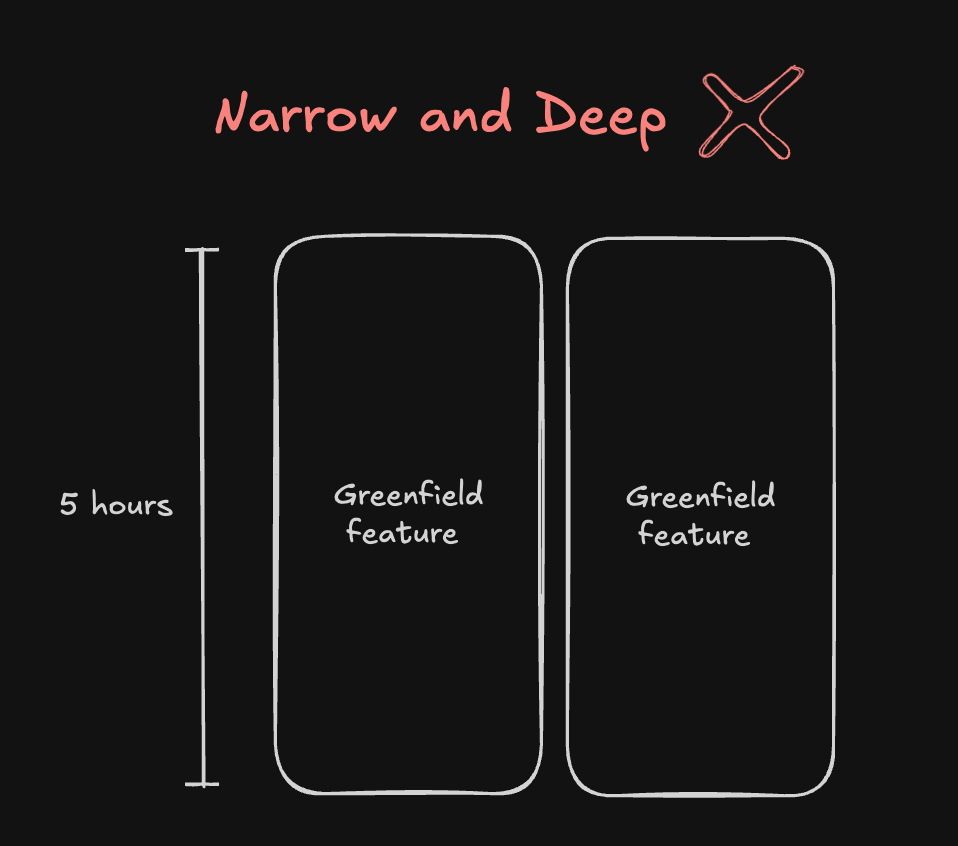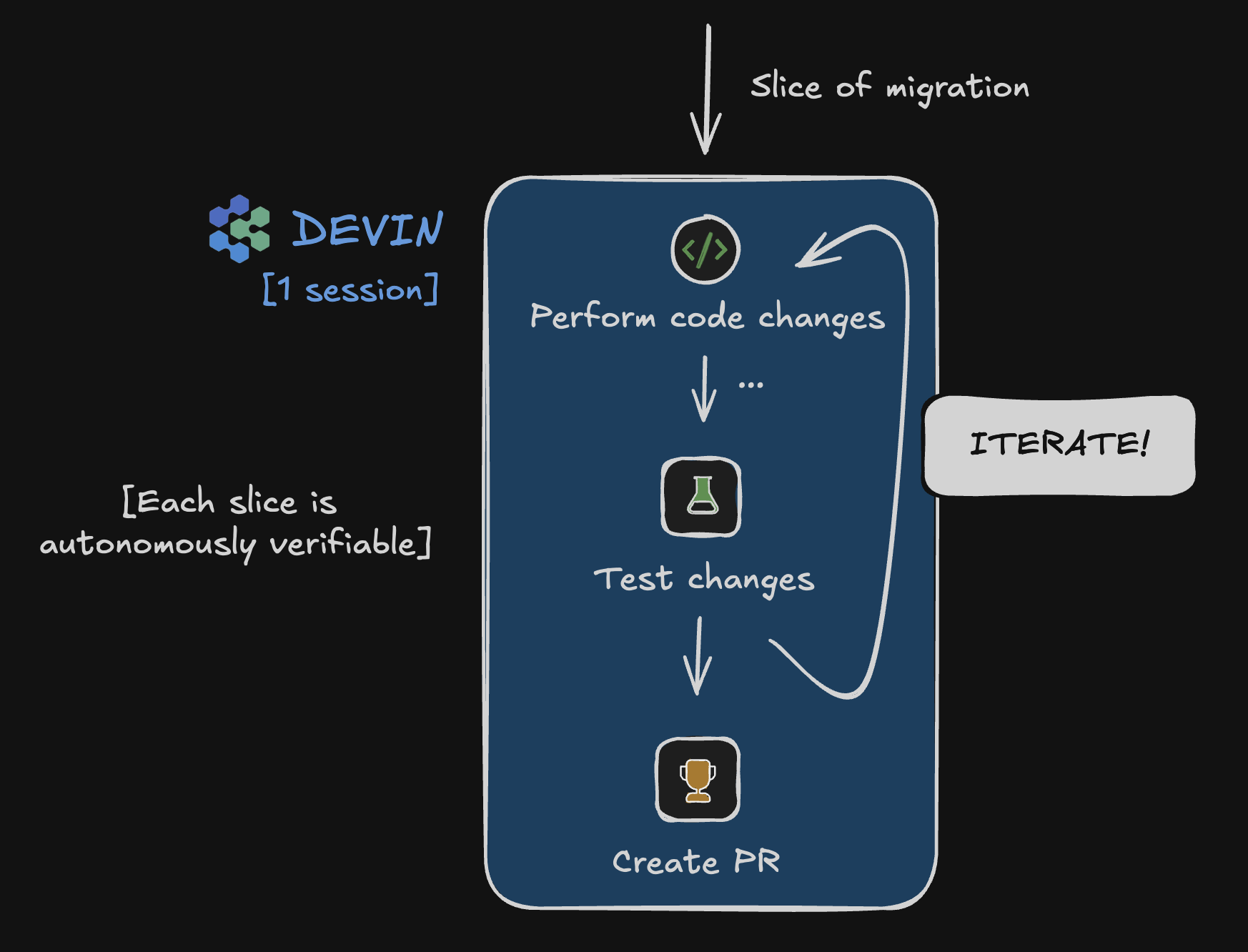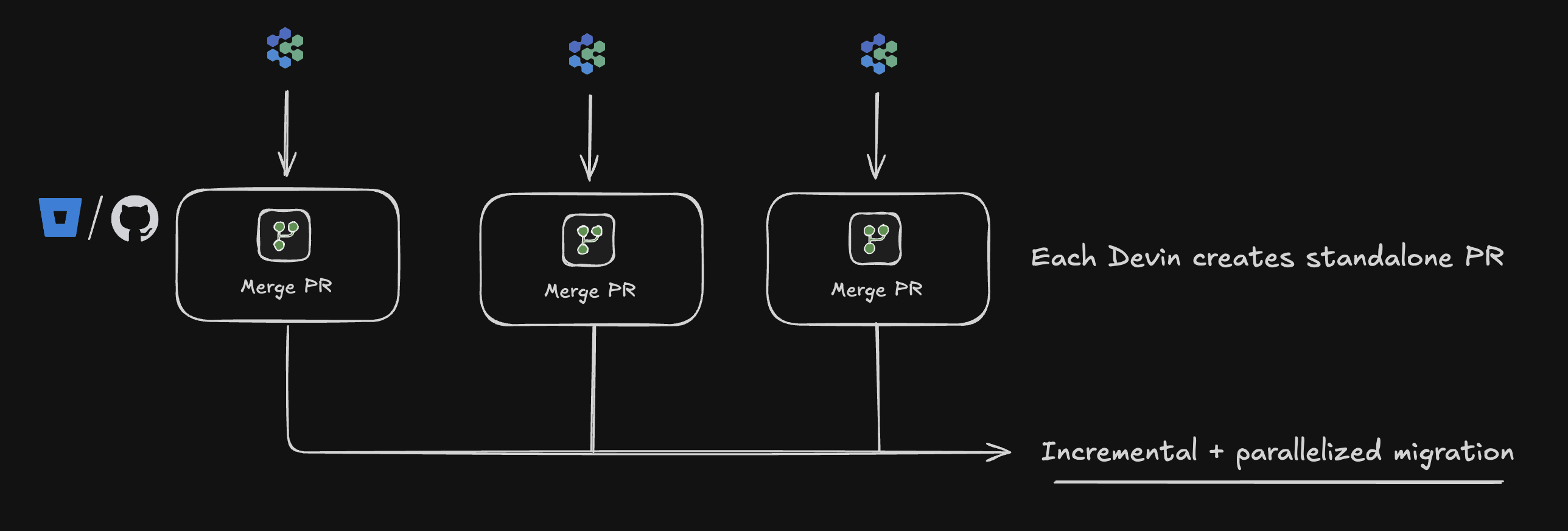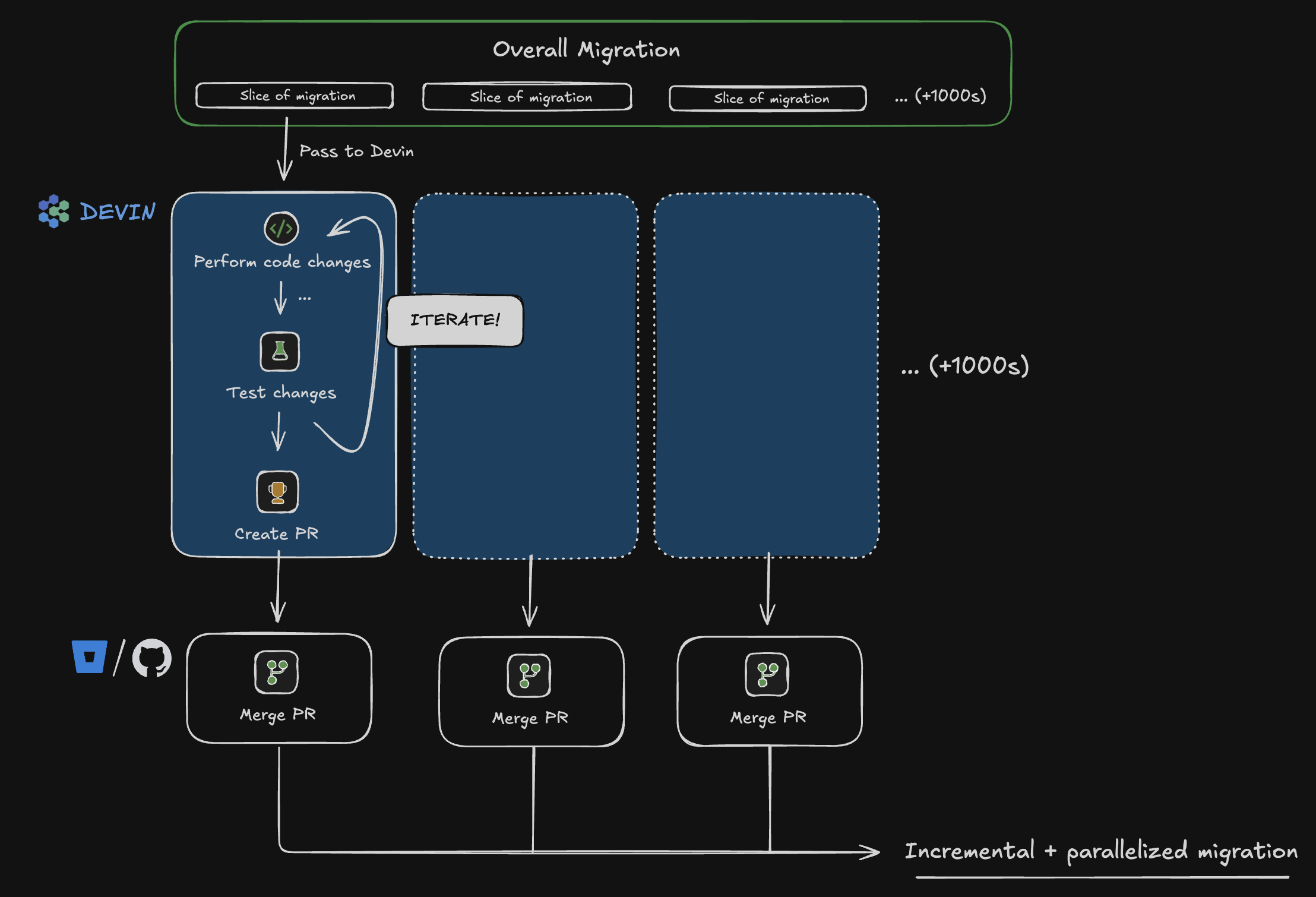Deciding on a Candidate Use Case
Identifying the right use case for Devin is key to maximizing efficiency and return on investment (ROI). Below are best practices for selecting a use case that aligns with Devin’s strengths. View Example Use CasesBest Enterprise Use Cases
| Ideal Use Case Criteria |
|---|
| Large, high-business-value projects that can be broken into isolated & repetitive subtasks. |
| Tasks that require less than 90 minutes of manual engineering time. |
| Backwards-compatible tasks that can be independently validated and merged. |
Devin’s Ideal Requirements
| Requirement | ✅ |
|---|---|
| High volume of repetitive subtasks (slices) | [ ] |
| Tasks of junior engineer-level complexity | [ ] |
| Isolated & incremental tasks | [ ] |
| Objective & verifiable subtasks | [ ] |
| (Recommended) Minimal project dependencies | [ ] |
Crafting Devin’s Work
Selecting the right task type is crucial for maximizing Devin’s reliability.| Scenario | Reliability Concern | Task Type |
|---|---|---|
| Asking Devin to build complex, net-new features (even if repetitive) | Lower reliability at scale | Tall & Deep |
| Assigning Devin simple, well-defined tasks | Highly reliable and effective | Wide & Shallow |
Tall & Deep vs. Wide & Shallow


The simpler the slice, the more reliable the overall project.
⚠️ What to Slice (Critical!)
Great candidates for Devin: ✅ Migrations ✅ Refactors ✅ Modernizations ✅ Technical debt backlogs For instance, when working on a code migration, it must be broken down into isolated slices, each handled by an individual Devin session.
Verification
A slice should be the smallest atomic unit of the project.| Example Slices |
|---|
| File |
| Notebook |
| Module |
| Requirement | Details |
|---|---|
| ⏳ Time Limit | Each slice must take under 90 minutes of manual engineering work. |
| ✅ Verification | Must include a way to validate code changes, such as: - Running tests - Building the code - CI checks - A custom verification script |
Devin must have a clear success/failure verification mechanism.
Avoid tasks with excessive dependencies or external systems. Devin excels at coding tasks.

Parallel Execution
| Requirement | Description |
|---|---|
| ✅ Isolation | Each slice must be independent and backwards-compatible. |
| ⚡ Parallel Execution | Utilize Devin’s parallelism to execute slices simultaneously. |
| 🔍 Human Review | After each slice is completed, it should undergo human review before merging into main. |

Scaling Considerations

| Principle | Description |
|---|---|
| 🎯 Slice-Level Reliability | Devin is optimized for maximum reliability at the individual slice level. |
| ⚡ Scaling Consideration | When scaling across thousands of slices, maintaining high reliability is critical. |
| ⚠️ Error Impact | Even a small error rate can compound when executing at scale. |
Best Practices for Task Definition
| ✅ Requirement | Description |
|---|---|
| Clear step details | Provide explicit instructions for each slice. |
| End-to-end reference | A detailed guide or video helps ensure consistency. |
| Before/After examples | Offer multiple before/after code examples (input/output pairs). |
| Dependency access | Ensure Devin has all necessary dependencies for the task. |
Explore Use Cases
Browse Enterprise Use Cases Devin excels in ongoing technical debt tasks (e.g., PR reviews, QA automation) when they are properly sliced and structured.Migrations, modernizations, and refactors are strong use cases if they can be tackled incrementally.
For example, a full-repository migration requiring all changes at once is not recommended.
